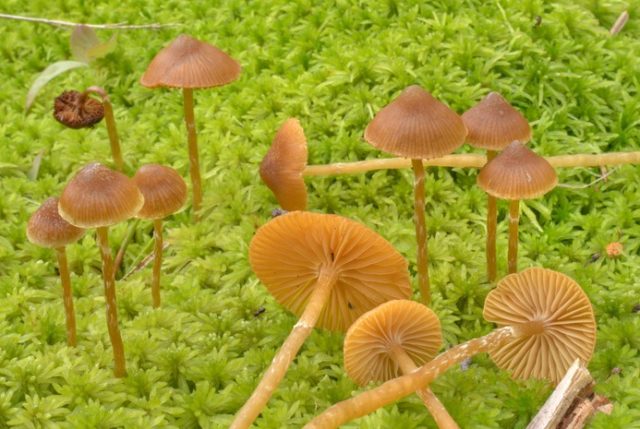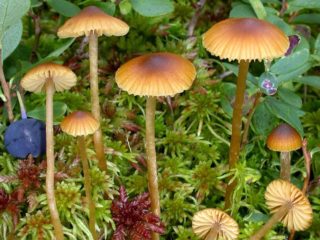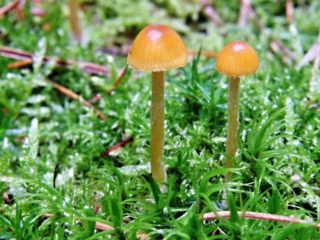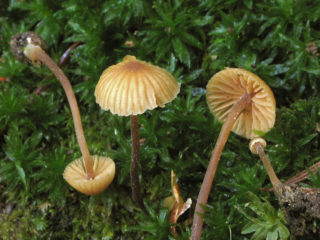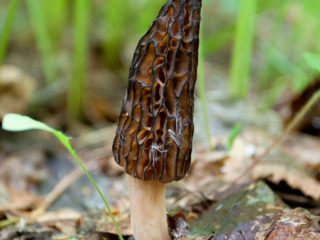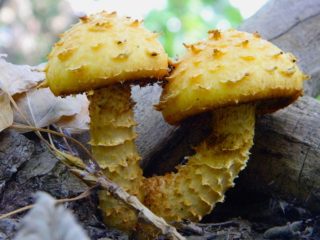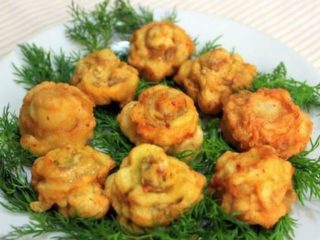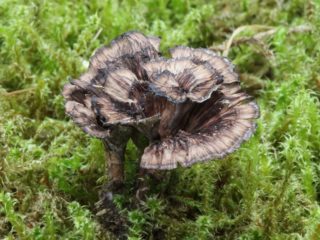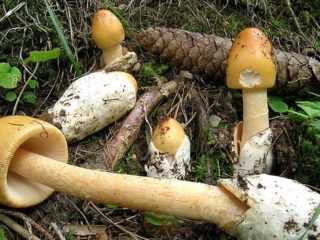Content
Galerina paludosa is an inedible mushroom that belongs to the Hymenogasteraceae family. The representative is difficult to confuse with honey mushrooms due to its long thread-like stem, but inexperienced mushroom pickers can make a mistake. It’s better to know what this species looks like so you don’t accidentally add it to your cart. Other names: Agrocybe elatella, Hebeloma elatellum, Tubaria paludosa.
What does the Bolotnaya gallery look like?
The convex cap of the young Galerina Bolotnaya has the shape of a bell. With age it becomes almost flat, but never grows more than 3 cm in diameter. A pointed tubercle is preserved in the central part of the cap; there is often a thin light edging along the edge.The color of the cap's surface varies from yellow to light brown depending on age and weather.
When it rains, the Bolotnaya gallery absorbs moisture like a sponge. The flesh of the cap consists of a loose interweaving of hyphae, which is why it swells from moisture and becomes slightly transparent. Underneath it are sparse plates attached to the stem; in young specimens they are light brown in color, darkening with age.
The filamentous leg of Galerina Bolotnaya is light yellow in color, it is covered with a powdery coating, which is easily erased by contact with the fingers. There is a noticeable white ring at the top. The length of the leg is from 8 to 13 cm, and the thickness is only 0.1-0.4 cm. The thin and brittle flesh is colored the same as the cap. The smell of the mushroom is weak.
Where does Galerina Bolotnaya grow?
You can find Galerina Bolotnaya from late June to October in swampy areas. It is found in mixed, deciduous and coniferous forests, preferring moist soil overgrown with sphagnum moss. Galerina Bolotnaya grows singly, sometimes found in groups, but individual specimens never have the same base as honey mushrooms.
Is it possible to eat Galerina Bolotnaya?
Galerina Bolotnaya should not be eaten. Like the toadstool, it contains dangerous toxins - amanitins and phalloidins. These are highly toxic substances that, when entering the human body, destroy the stomach, kidneys and liver. The impact occurs slowly. Toxins are easily absorbed in the gastrointestinal tract and begin their destructive work.
During heat treatment, toxic substances are not destroyed. They are preserved in fruits after drying, pickling, freezing and salting.One Galerina Bolotnaya, caught in a mass of edible mushrooms, will make the entire preparation unsuitable for consumption.
Symptoms of poisoning
The first signs of poisoning by Galerina Bolotnaya appear after about 6-30 hours. If you do not provide assistance to the victim, weakness will increase, the liver will noticeably enlarge, jaundice and nephropathy will begin.
Poisoning manifests itself in stages, the severity of the lesion and its outcome depend on the dose of poison received and the condition of the body. At first, the poison acts secretly, the latent period after consumption is on average 12 hours.
At the second stage of poisoning, which lasts from two to six days, the victim’s condition deteriorates sharply. Diarrhea with blood begins, severe vomiting, unquenchable thirst, sharp pain in the stomach and liver, and convulsions. Vision deteriorates and urination becomes difficult, the skin turns pale.
The third stage of poisoning is the saddest, it lasts about a day. The victim feels imaginary relief and seems to be on the mend. In fact, the liver, having undergone irreversible changes, will soon fail and death will occur. But if the dose of poison was small and medical assistance was provided, a favorable outcome is possible.
First aid for poisoning
At the first sign of poisoning, you must urgently call an ambulance. In order for the outcome to be favorable, contacting a doctor should take place no later than 36 hours after eating mushrooms.
When amanitins enter the body, irreversible destruction occurs, so at the first suspicion of poisoning, you should try to cleanse the stomach.To do this, drink a lot of liquid and induce vomiting by pressing on the root of the tongue.
Conclusion
Galerina Bolotnaya is considered poisonous. It should not be confused with honey mushrooms and other edible mushrooms; a mistake can be very expensive. If there is the slightest doubt about edibility, it is better to leave suspicious forest fruits to grow where they were found. It will be difficult to provide first aid in case of poisoning, since the poison is very quickly absorbed by the body and causes irreversible damage to it.
